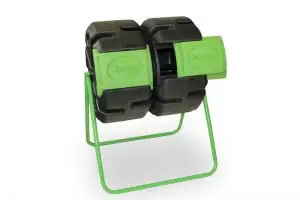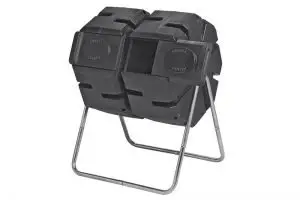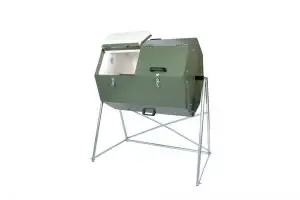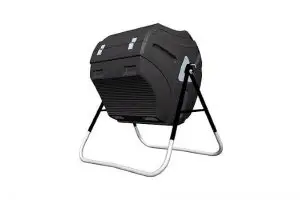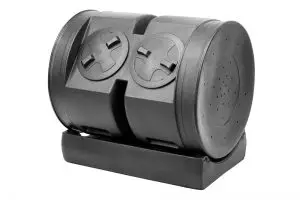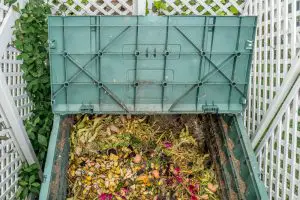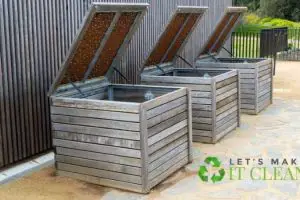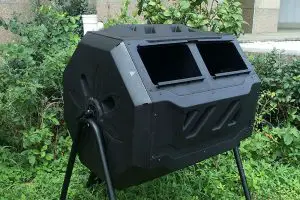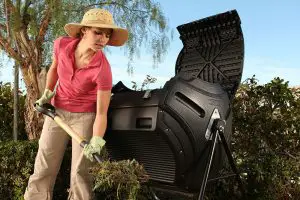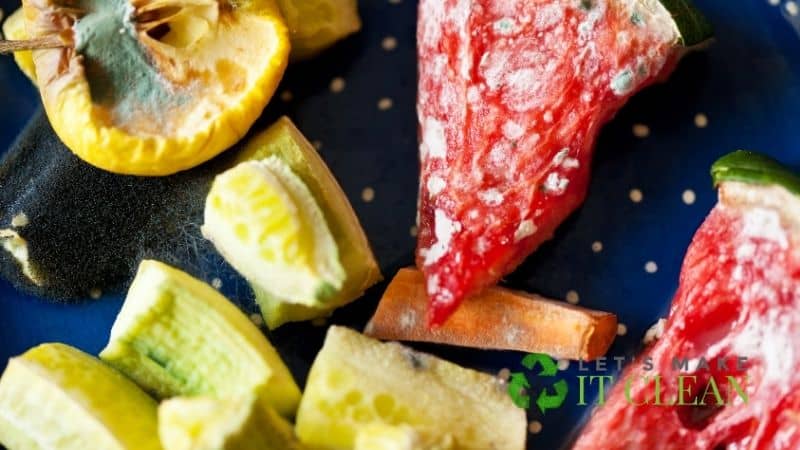Are you an expert or a novice in home gardening? Whether you are a beginner or a professional, some tips to make your gardening better should be welcome.
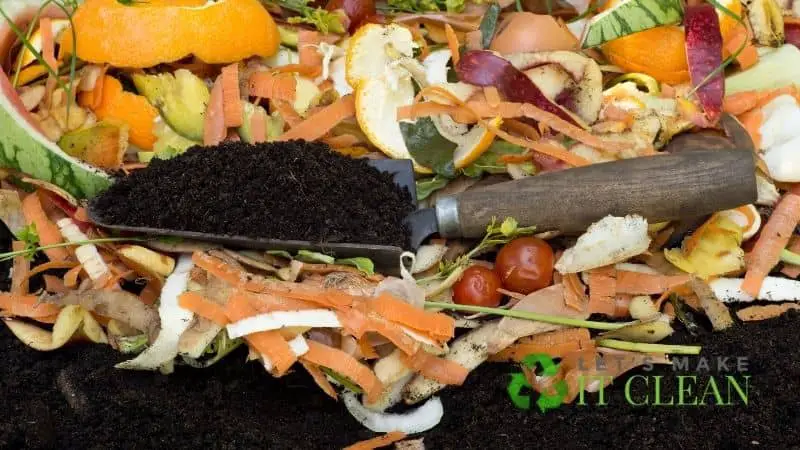
How do you treat your kitchen waste as a compost ingredient?
Quick Navigation
- Why Compost?
- Tips to Help You Composite Like a Pro
- 1. Choose the Best Compost Method
- 2. Get a System to Collect the Kitchen Waste
- 3. Add Nitrogen and Carbon Ingredients
- 4. Understand What Compost Needs
- 5. How Do You Know the Process Is Complete?
- 6. Can You Compost Pine Needles?
- 7. Cultivate the Soil Around the Compost Pile
- 8. Can You Use Vegetable Oil in a Compost Pile?
- 9. What About Weed Seeds as a Great Compost Ingredient?
- 10. Monitor the Fungus Growth
- 11. Use Your Compost
- 12. Don’ts Concerning Compost
- 13. Composting Sites
- Conclusion
Can you use newspaper and any other white paper as ingredients to make compost? How about plant leaves and any other organic matter treated with pesticides?
All these are essential questions that require answers for you to compost like a pro. Don’t fret. This article has the best garden expert tips that will see you compost like a pro.
Why Compost?
If you have grass clippings, dry leaves, food scraps, and weeds in your compound, you may see that as waste. However, composting transforms the material meant to be wasted into more useful nutrients in the soil.
Apart from composite ingredients adding useful nutrients to the soil, the process is also vital in keeping the atmosphere clean. Soil acts as a carbon sink or a reservoir. Instead of the carbon remaining in the atmosphere, the soil traps it, keeping the atmosphere clean.
According to Melinda Cordell, the author of Stay Grounded: Soil Building for Sustainable Gardens, “one way to create a carbon sink is simple: through making and using compost.”
The Environment Protection Agency says that 94% of the thrown-away food is combusted or sent to landfills. This leads to the release of methane gas, destroying the atmosphere.
If you want to buy homemade composite alternatives from the store, you have to pay more. The high cost of the products may discourage you from gardening.
Whether you are a novice or a pro in compositing matters, learning doesn’t stop. It would be best if you were willing to learn more and try out new ingredients and techniques. If something doesn’t work out, nothing stops you from trying another technique.
As much as there are many ways you can get rid of the waste in your home, compositing is best.
Are you ready to try out compositing and looking for some tips?
Tips to Help You Composite Like a Pro
1. Choose the Best Compost Method
There are several composting methods, such as a compost tumbler, compost piles, and bins. Your method choice for composting depends on various factors such as the size of your garden and the amount of yard waste.
If you have a small garden or have issues transporting the composite, a composite tumbler would be a perfect pick. If you have a significant garden, you can use a large compost bin or use a wire-type bin.
Alternatively, you can use a compost pile. Here, you throw the yard waste and your kitchen scraps in the compost pile. It would be best if you have the pile in a secluded place. When you need the compost, pull it from the bottom of the compost pile.
It’s advisable that you prepare the compost before planting.
It would be best to prepare compost in large quantities as the large heaps generate more heat. Since small piles generate less heat, the composting ingredients don’t break down as fast.
If you have small piles of compost ingredients, you can cover them with a plastic tarpaulin or keep them in a sheltered and sunny spot. This fastens the breakdown of the piles.
You can also have leaf compost where you mix the leaves in your compound with other ingredients such as food scraps and other waste materials.
2. Get a System to Collect the Kitchen Waste
How do you collect food scraps and any other waste material in your kitchen?
If you don’t have a system to collect the kitchen scraps and other materials, they’ll most likely end up in the trash.
This works against the idea of composting to reduce waste and add more nutrients to the garden. You should get a place to put the fruit and vegetable choppings in the kitchen.
The container should be somewhere you can see and use it. It would be best if you get a compost collecting bin as it allows airflow. Thus, you get rid of flies and also prevent the fruits from fermenting.
Additionally, you can make use of a triple bin system. In this system, a removable slat separates each bay from the next. The ideal size for each bay is one cubic meter, but you can adjust the size depending on your garden’s size.
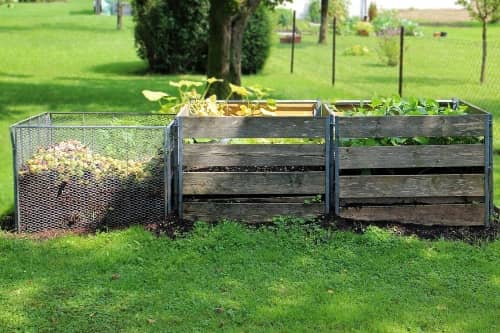
As a rule, each bay should carry a month’s worth of compost materials. If the first bay is full, transfer the compost ingredients to the second bay using a fork or a shovel. Mix well to make the composting process faster.
Then start refilling the first bay with kitchen scraps, grass clippings, and other organic materials at will. When the second bay is full, transfer the composting materials to the third bay.
When the triple bin system is fully operational, you’ll have composite materials in three stages of the decomposition process: starting, progressing, and finished compost.
If you wish to make the compost maintenance seamless, you can go for a two-batch compost method. Here, you’ll have a tumbler with two compartments, one for collecting new garden waste and other composting materials.
The system saves you the hassle of working on large compost piles. Working on smaller piles also yields faster results.
3. Add Nitrogen and Carbon Ingredients
There are microbes responsible for breaking down your compost materials to finished compost. For the microbes to work well, they need a balanced combination of carbon and nitrogen.
The nitrogen-rich compost ingredients in your compost include green materials such as grass clippings, food scraps, and manure. On the other hand, carbon-rich compost ingredients include brown materials such as shredded newspaper, hay, dead leaves, and wood chips.
Tea leaves are also some of the great compost materials that balance the carbon to nitrogen ratio. They are rich in nitrogen, and you can combine them with shredded cardboard and paper to balance the carbon ratio.
To achieve the best results, you should have equal proportions by weight of both the carbon and nitrogen compost ingredients.
Note, most gardens have an abundance of green waste that is a key source of nitrogen. Most garden wastes lack structural strength, and they are bound to collapse during the composting process. You should add fibrous materials such as shredded newspaper, dead leaves, hedge trimmings, and other fibrous compost ingredients.
Balancing the green and brown carbon-rich materials is vital in the composting process. If your compost smells or is attracting flies, it would be the nitrogen in the green waste is producing a lot of enzymes.
The compost also smells due to the high number of anaerobic microbes working hard to break down the compost ingredients. Aerating the pile regularly helps to minimize the anaerobic activities while also stimulating the less stinky anaerobic.
If the composting process is moving too slowly, it means there are fewer greens producing nitrogen. You should strive to achieve a nitrogen to carbon ratio (C: N) of about 30 parts of carbon content to 1 part of nitrogen. Or one-third nitrogen to two-thirds carbon content.
Add green plant materials in excess, and the pile becomes smelly. On the other hand, add too much carbon materials, and the pile will take forever to break down.
Note, apart from grass clippings, vegetable scraps, and other brown compost ingredients, you can also compost fish scraps and meat scraps. However, ensure that you have an animal-proof bin to prevent attracting flies. If possible, you should avoid such compost ingredients.
A blood meal is also effective in balancing carbons. The blood meal is dried and powdered blood from slaughterhouses, and it is rich in nitrogen.
Brown materials such as wood chips and corn cobs tend to take more time to decompose. It would be best to smash them into small pieces using a hammer or a rock to make it easier for the microorganisms in the composting pile to break them down.
Straw is also a perfect source of carbon, but it may contain weed seeds. As such, you should ensure they are cooking well. You can also use spent straw used in mushroom production (see how to make mushroom compost), though it is low quality. You should combine the straw with cattle feed production and other by-products to improve the quality.
Using straw in your process has an added advantage as it entraps air, which helps to aerate the pile.
4. Understand What Compost Needs
Apart from ensuring you have the right nitrogen to carbon ratio, you need to understand some other factors that lead to quality compost.
If your compost pile leaks, it’s probably because it lacks oxygen. The lack of aeration may be due to the heavy pile of grass clippings on the compost pile that can smother the heap. To ensure proper aeration of the pile, you should ensure you don’t have more than 2 inches (5 cm) thick grass clippings layers.
Rice straw is an excellent ingredient that helps in aeration.
Additionally, it is vital to note that dry compost cannot break. The same applies to the overly wet compost pile. As such, you need to ensure that you get the correct moisture content for the best results.
A compost pile should remain damp but not wet. Each layer added as you build the compost should be moist, and the surface should also be damp but not wet.
Additionally, kitchen scraps and grass clippings are 80% water. As such, you should mix them with carbon-rich brown materials such as shredded cardboard, peanut shells, and sawdust.
If you expose your piles or bins, they can become water-logged, especially during rains. It would help to use a covered bin or an enclosed tumbler to maintain the moisture content.
In terms of temperature, decomposition of the ingredients happens fastest at 120 to 1600 F. Decomposition will still happen in lower temperatures, but it will be slower. It would help if you get a compost thermometer to help you measure the temperature in your composter or compost bin.
A functioning bin should offer a temperature of between 140 to 1700F. If you want faster results, you can get a compost turner and turn the compost pile every two weeks to aerate it.
The more ingredients you add up at one time, the more heat you generate. Therefore, it would be better to add the pile at once instead of small bits. If you intend to compost during winter, keep your compost pile in a black plastic bin and put it in direct sunlight. This helps to continue the composting process even during winter.
When the compost is finished, you can soak it in water to brew compost tea. Compost tea is a nutrient-rich fluid that you can use to feed the foliar and water other plants and flowers.
When composting, it is also essential that you consider the compost pile pH. For the composting bacteria to work best, they require neutral to acidic situations, with a pH value of between 5.5 to 8.
5. How Do You Know the Process Is Complete?
How do you know if your compost pile is ready for use?
Get a handful of the compost from the center of the pile and squeeze it. If you get some drops of water, then the compost is perfect for use in your garden.
One significant concern with gardeners using compost manure in their gardens is the fear of burning crops. Luckily, with homemade compost, you don’t have to worry about too much compost in your soil.
You can use the ready compost at any time of the year to build your garden. With proper use, compost manure blesses gardeners with the best results at all times.
A compost pile can be layered with thin layers of alternating green plants, vegetable peels and leaves, and layers of brown material such as cardboard shreds. Alternatively, you can mix all the ingredients and put them together in the compost compile. Either way, you end up with quality compost.
6. Can You Compost Pine Needles?
Yes, you can. However, ensure that pine needles are less than 10% of your pile. Pine needles take longer to decompose than other ingredients.
If you have large volumes of pine needles in your composter, you may end up with unfinished compost.
7. Cultivate the Soil Around the Compost Pile
Should you build a compost pile over compact soil or concrete?
No, you shouldn’t. You should cultivate the area around the compost pile to encourage worm activity.
Apart from the earthworms, you can also extend the composting worms family by adding tiger worms. You can get the worms from garden centers.
Worms love eating coffee grounds.
Apart from coffee grounds, worms also feed on most kitchen waste such as vegetable peels, tea bags, eggshells, and fruit rinds. However, you should avoid dairy products and meat in the worm bin.
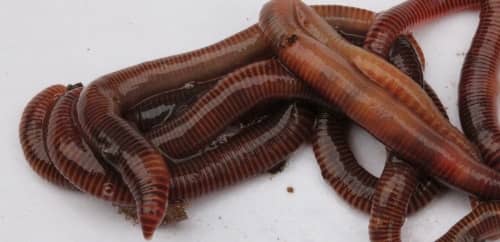
Red Wiggler is the best worm to use in the compost vermicomposting system. The worm is known for consuming large amounts of manure, leaves, plants, and other natural habitat materials. It also produces castings, which are an excellent addition to the soil.
You can also use worms to convert pet poop to castings, a nutrient-rich material essential for your garden. They also eat the bacteria that produce odor such that no smell comes from the castings.
You might like: How To Safely Compost Human Waste?
The best thing about composting worms is that you can leave them for weeks without worrying. You only need to ensure you feed them with eggshells, leaves, and other materials before leaving. If you are away for an extended period, you can consider getting a worm sitter.
Coffee grounds and coffee filters are also a great source of nitrogen, and they decompose fast if you put them in a damp compost pile. Worms also love eating the filters.
When using a worm bin, it’s also essential that you consider acidity. Redworms offer the best results with a pH of about 7.0. However, it can tolerate a range from 4.2 to 8.0.
8. Can You Use Vegetable Oil in a Compost Pile?
Yes, you can. If you have little vegetable oil left in your kitchens, such as corn oil or sunflower oil, you can use it in compost. However, too much of it may slow down the composting process.
9. What About Weed Seeds as a Great Compost Ingredient?
You can use weeds and any other plant material. However, you should ensure you get rid of the weed seeds. If you have some perennial weeds such as ivy, soak them in a bucket for some weeks before putting them in your composter.
10. Monitor the Fungus Growth
The presence of fungus in your compost pile shouldn’t worry you. In fact, fungus is a great ingredient, just like leaves, manure, and other green ingredients.
The presence of mushrooms and fungi in your pile may indicate you have added a lot of browns such as cardboard and shredded paper.
The growth of mushrooms may not be harmful, though some mushrooms can be toxic. You can manage the fungus by aerating the pile and maintaining a balance of the material you use.
11. Use Your Compost
When your compost is ready, you can use it in your garden. Unlike commercial fertilizers that come with a lot of nitrogen, compost is safe.
Compost is human-made using green leaves, which is a nitrogen-rich material. It also contains other materials such as shredded cardboard and paper that offer the pile’s carbon balance.
12. Don’ts Concerning Compost
Don’t put the ingredients or composting materials in your pile with the produce stickers still on. You should remove the stickers as they are made of plastic, which won’t break down.
You should also avoid using compostable or biodegradable plastic material as it doesn’t break down like other materials such as green leaves. It only breaks down into smaller plastics.
Additionally, avoid using green leaves and other plants that may have pesticides. If you are not sure about them, throw them away. The same applies to brown materials such as paper shreds and straw. If they are contaminated, avoid them.
Refrain from dairy products while composting as they attract pests.
Don’t use large quantities of pine needles in your pile. It takes a long time to decompose pine needles than it takes other ingredients.
13. Composting Sites
If composting at home is a challenge, you can try composting sites in your locality.
Note, different sites have protocols that you must adhere to. For instance, they may not accept plastics.
Conclusion
Human composts are made using organic ingredients that make them safe to use. Additionally, you have the option of using the material of your choice.
Your choice of material can either be nitrogen or carbon-rich to balance the ratio in the compost pile.
Apart from being useful for the garden, human composting is also environmentally friendly. It also saves you the cost of buying commercial fertilizers.

